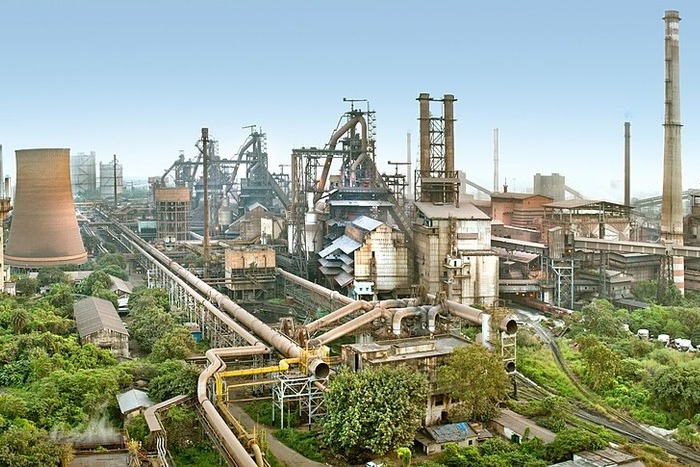The reduction in emissions can go up to 29 million tonnes of CO2 annually
India’s heavy industries sector has been difficult to decarbonise, with its heavy reliance on captive coal generation. But there’s an opportunity for the big industries of steel, cement and aluminium to capitalise on a 20 GW solar open access market opportunity, according to a new report by the energy think tank Ember.
Titled ‘RE-powering India’s heavy industries: 20 GW today, 24/7 tomorrow’, it looks into the possibility of renewable energy procurement reducing production costs as well as emissions. The abatement in emissions can go up to 29 million tonnes of CO2 annually.
Out of this 20 GW open access solar opportunity, the steel industry has the potential to contribute 9.4 GW, finds the report, while cement and aluminium together can contribute the remaining 11 GW.
Reducing production costs
If steel makers switch to open access solar, there can potentially be a 10% reduction in the production cost of electric arc furnaces (EAF) used in steelmaking, according to the report.
For direct reduced iron–arc furnace (DRI-EAF) based steelmaking, the potential cost savings are lesser, hovering between 2–5%. In cement manufacturing, the savings fall further, while the aluminium sector’s heavy reliance on captive coal based power generation does not allow for savings to occur through solar usage.
“India’s industrial sector, one of the hardest to decarbonize, has significant financial incentives to transition through renewable-based electrification. However, policy and institutional barriers must be dismantled to maximize this shift,” said Labanya Prakash Jena, sustainable finance consultant at IEEFA.
To reap more benefits from renewable energy, it is important that these industries go beyond getting around 50% of its power needs from a combination of renewable sources. Ember’s analysis shows that the penetration of renewable energy can be as high as 80%. This will require proper energy storage, and infrastructure to manage surplus power—plain solar won’t do the trick. But the cost will increase by about 1.4 times as a result.
In order to have electricity from renewable energy all day round, the necessary investment in battery and energy storage infrastructure will drive the cost as high as 3.5 times.
“Renewables are already a cost-effective solution for Indian industries, and 24/7 clean power is the benchmark for the future of renewable procurement. This report highlights that companies can make significant progress toward round-the-clock renewable supply today, with further innovation in storage, flexible demand, and market design needed to achieve full 24/7 coverage at competitive rates,” said Killian Daly, Executive Director at EnergyTag.
Greening old industrial states
According to the report, nearly 40% of the 20 GW open access solar power opportunity is concentrated in the eastern states of Odisha and Chhattisgarh, traditional hubs for these heavy industries. Recent policies offering discounts on cross-subsidy surcharge and various other charges strengthen the business case for renewable procurement across states.
“States such as Odisha and Chhattisgarh have long been legacy industrial hubs, owing to their proximity to rich mineral reserves. By integrating renewable power, they are well-positioned to begin their transformation to green manufacturing hubs. The shift is already in motion — Odisha is now actively envisioning green industrial parks, setting the stage for an export-driven, low-carbon future in manufacturing,” said lead author Duttatreya Das, an analyst at Ember.
If this opportunity is utilised properly to transform heavy industrial hubs to green manufacturing hubs, it will attract international climate finance and corporate investments, according to the report.
It also has broader implications for how renewable energy can help high-emitting industries like steel to adapt with India’s green steel taxonomy coming into play.
About The Author
You may also like
Renewable is elbowing out coal: Can it continue the growth momentum?
Rising Global Energy Demand Fuel Security Threats: WEO Report
PMSGY Drives Rooftop Solar Expansion, But Challenges Remain: Report
Global Renewable Energy Capacity to Double by 2030, Led by Solar PV: Report
India’s GST overhaul eases path for India’s green growth

